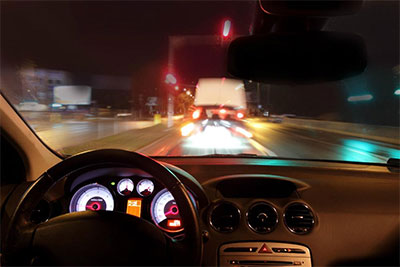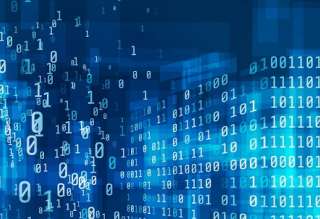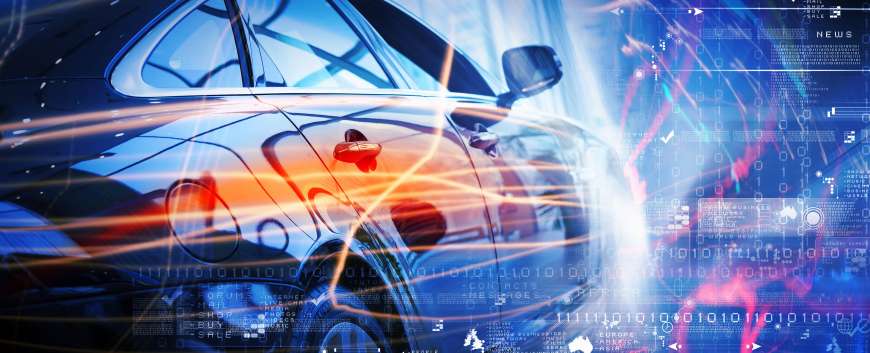Signal Processing: How This Science Puts Our Lives in Motion
Top Reasons to Join SPS Today!
1. IEEE Signal Processing Magazine
2. Signal Processing Digital Library*
3. Inside Signal Processing Newsletter
4. SPS Resource Center
5. Career advancement & recognition
6. Discounts on conferences and publications
7. Professional networking
8. Communities for students, young professionals, and women
9. Volunteer opportunities
10. Coming soon! PDH/CEU credits
Click here to learn more.
Signal Processing: How This Science Puts Our Lives in Motion
Declan O’Neill, Telecommunications Engineering undergraduate at the Dublin Institute of Technology
If you were asked the meaning of the term “signal processing,” how would you respond? I'm sure you could easily explain what processing means, but what's a signal? A signal is anything we can sense, be it a sight, a sound, the heat felt from a warm object or a draft felt rolling through a room. It could even be the shudder felt through the floor when a truck drives down your street. But when we talk about signal processing, what do we mean and where can we see it? Could we reasonably call it “the science behind our digital life?” The short answer is yes, but why?
For the last 80 years or so, computers have been very steadily creeping into our lives. Today, they are ubiquitous. Almost all of us carry a reasonably sophisticated computer in our pocket in the form of a smart phone. And a computer's sole concern is data – the input of, the processing of, and the output of. Data, data, data. We could compare this relationship between computers and data to our relationship with the things we sense in the world. If we hear a klaxon sound, we try to understand why and then react as we see fit. If we feel our bodies collide against something, we try to identify what it is and whether we now need to move around the object or simply let it bounce off of us. If we find ourselves waiting at a red light that suddenly turns green, we cease to wait and set off in motion.
These sounds, sensations and sights are our data. Our reactions to each come entirely naturally, built up over a lifetime of experience. But if these data are input to a computer, how does the computer know what they are? A computer controlling a navigation system may be easily told that it needs to go around an obstacle should it find one, but how does it know what constitutes an obstacle in the first place? The answer lies in the application of signal processing, which continues to permeate our lives more and more as our reliance upon and expectations of technology increases. 
Take the example of waiting at a red light: this is a frequent occurrence for those of us who drive cars, but there have been great advances in recent years in the development of cars that drive us. This technology has us thinking of all sorts of interesting questions, ranging from the practical to the philosophical. One such question is the matter of how these vehicles interpret their surroundings. Signal processing employs a range of mathematical techniques and algorithms to help computers “see” their environment using tools such as cameras, radar, infrared and laser, and it's the task of the signal processing engineer to design or choose the software and hardware that will allow the system make the correct assumptions based on the gathered data sets.
These assumptions include the direction and curvature of the road ahead, the location, speed, acceleration and trajectory of other vehicles, and the identification of potential hazards: pedestrians; cyclists; dangerous obstacles. In a complete system, the above will be augmented with information from other components to determine, for example, the car's own trajectory and even the driver's state of alertness. Again, this is largely impossible without the comprehensive application of signal processing to the data received by the sensors installed throughout the system.
At this point it might be tempting to say, “Ok, well that doesn't sound like the most complex problem in the world. Put a few sensors on a car and off you go.” But bear in mind we're not talking about simple numbers here. At the beginning of this decade, one major car manufacturer's system for detecting driver fatigue alone processed data from over 70 input sets a number of times during every single second of operation. Real-time pedestrian profiles were compared with over 1.5 million examples stored on-board, a number matched today by one of the major tech companies road-tested autonomous vehicle mile-count: 1.5 million, all of which were travelled without a major incident. It's looking increasingly likely that at least a significant amount of future traffic will be made up of some form of self-driving vehicle.
This may have huge social implications: I like driving my car. Would I be prepared to relinquish the experience? Many people make their living from transporting goods and people. Will they readily embrace such a change?
Signal processing has been one of the most transforming technologies that we as humans have ever devised. It has been embedded so deeply within our lives that we scarcely notice it. Radio, television and data communications; integrated circuits; biological imaging; climate modelling; financial analysis; energy distribution; big data. Take almost any area that impresses upon our modern lives – signal processing is often the difference between our possessing large groups of useless data and our ability to arrange the world around us in a way that advances our civilization.
SPS Social Media
- IEEE SPS Facebook Page https://www.facebook.com/ieeeSPS
- IEEE SPS X Page https://x.com/IEEEsps
- IEEE SPS Instagram Page https://www.instagram.com/ieeesps/?hl=en
- IEEE SPS LinkedIn Page https://www.linkedin.com/company/ieeesps/
- IEEE SPS YouTube Channel https://www.youtube.com/ieeeSPS











